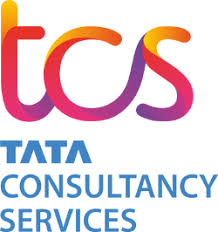Providing early childhood education support
%201%20(1).png)
Pratham developed 'BaalSakhi', a chatbot powered by Meta's Llama 2 (70B), integrating via WhatsApp to provide personalized, on-demand support for early childhood care and education to parents and caregivers in resource-poor settings. BaalSakhi draws insights from trusted sources like government departments, UNICEF, WHO, and childcare experts, helping users navigate their child's early development journey independently.
.png)
46
AI use cases in
Education

%201%20(1).png)
Rising Academies integrated Claude-powered chatbots into mobile educational tools via WhatsApp to provide both a virtual math tutor (Rori) and a teacher support system (Tari). Rori delivers personalized math lessons through a mix of pre-written lesson plans and dynamic conversations, while Tari offers on-demand curriculum and lesson planning support for teachers. These solutions enhanced personalized learning and professional development in regions with limited access to traditional edtech.
%20(1).png)

%201%20(1).png)
Pensieve integrated Anthropic's Claude models (Claude 3.5 Sonnet and Claude 3.7 Sonnet) to build AI teaching assistants that automate grading and provide 24/7 personalized tutoring. The system clusters student submissions to calibrate grading rubrics and transforms static PDFs into interactive worksheets while enforcing instructor-controlled policies. This integration streamlines course management workflows and enhances real‐time classroom analytics.
%20(1).png)

%201%20(1).png)
Super Teacher integrated Anthropic's Claude to generate initial code for interactive educational tools and draft lesson plans for subjects ranging from pre-K to 5th grade. They embedded the AI into both software development and content creation workflows with mandatory human review to ensure safety and quality standards. This integration streamlined operational processes, enabling engineering and content teams to focus on higher-level development and creative enhancements.
%20(1).png)
172
companies using
Customer Agents

%201%20(1).png)
NVIDIA partnered with Google Cloud to enable on-premises agentic AI by integrating Google Gemini models with NVIDIA Blackwell platforms and Confidential Computing, ensuring data sovereignty and regulatory compliance for sensitive enterprise operations. The solution further optimizes AI inference and observability by deploying a GKE Inference Gateway alongside NVIDIA Triton Inference Server, NVIDIA NeMo Guardrails, and NVIDIA Dynamo to enhance secure routing and load balancing for enterprise workloads.
%20(1).png)

%201%20(1).png)
Intuit integrated Google Cloud’s Document AI and Gemini models into its GenOS platform to automate the autofill of ten common U.S. tax forms, including complex 1099 and 1040 forms. The solution extracts and categorizes data from uploaded documents, drastically reducing manual data entry for TurboTax customers. This integration streamlines tax preparation workflows and improves speed and accuracy.
%20(1).png)

%201%20(1).png)
Capgemini partnered with Google Cloud to develop industry-specific agentic AI solutions that automate customer request handling across multiple channels such as web, social, and phone. The implementation integrates Google Agentspace, Customer Engagement Suite, and Agent2Agent interoperability protocol into existing customer service infrastructures to enhance personalized support, call routing, and workflow automation. This advanced solution transforms customer experience by streamlining communications and enabling proactive engagement.
%20(1).png)
49
solutions powered by
Meta

%201%20(1).png)
Roboflow uses Meta's Segment Anything Model (SAM) to enable users to automatically segment objects in images and videos, significantly reducing the time required to create training datasets for computer vision models.
%20(1).png)

%201%20(1).png)
Untukmu.AI, an online gifting site in Indonesia, uses Meta's Llama 3.1 8B model with split inference processing to protect customer privacy. By running part of the AI model on customers' devices and the rest on their servers, they deliver personalized gift recommendations without accessing or storing personal data. This ensures customer privacy while still providing high-quality, tailored suggestions, enhancing trust and satisfaction.
%20(1).png)

%201%20(1).png)
CodeGPT, a popular coding assistant with over 1.4 million downloads, integrates Meta's Llama models to enhance developer productivity. By using Llama 3.2 (90B), CodeGPT helps developers not just generate code but also answer questions about their codebase, debug code, and onboard new team members. It includes a codebase graph mechanism that lets Llama understand entire repositories, allowing developers to effectively "talk" with their code. This integration leads to at least a 30% increase in productivity and accelerates onboarding from months to days.
%20(1).png)
78
AI use cases in
Asia

%201%20(1).png)
TCS partnered with Google Cloud to integrate advanced AI and generative AI capabilities into retail service offerings. They launched the Google Cloud Gemini Experience Center at their Retail Innovation Lab in Chennai, enabling retail clients to ideate, prototype, and co-develop tailored AI solutions that optimize supply chain, warehouse receiving, customer insights, and content creation. This approach automated processes using tools like Vertex AI Vision for warehouse receiving and leveraged Vertex AI with Gemini 1.5 Pro and speech-to-text to transform service centers.
%20(1).png)

%201%20(1).png)
LY Corporation leveraged OpenAI’s API to integrate advanced generative AI into its flagship services, including a GPT‑4o-powered LINE AI Assistant and GPT‑4 enhancements in Yahoo! JAPAN Search for summarizing reviews and generating travel plans. They also deployed SeekAI, an in-house productivity tool using RAG to rapidly retrieve information from internal documentation, streamlining employee inquiries and operations.
%20(1).png)

%201%20(1).png)
Physics Wallah developed 'Gyan Guru', a hyperpersonalized conversational study companion to address the unique academic and support needs of its 2 million daily users. The system was implemented by indexing over one million Q&As and ten million solved doubts in a vector database, then leveraging a Retrieval-Augmented Generation (RAG) approach integrated with Azure OpenAI to deliver individualized, context-aware responses. This integration streamlined various student interactions including academic queries, product-related issues, and general support, reducing reliance on human subject matter experts.
%20(1).png)
%201%20(1).png)
%202.png)

%202.png)
%201.png)
%201.png)
%20(1)%20(1).png)
.png)


.png)
.svg)


.png)


.png)









%201.png)